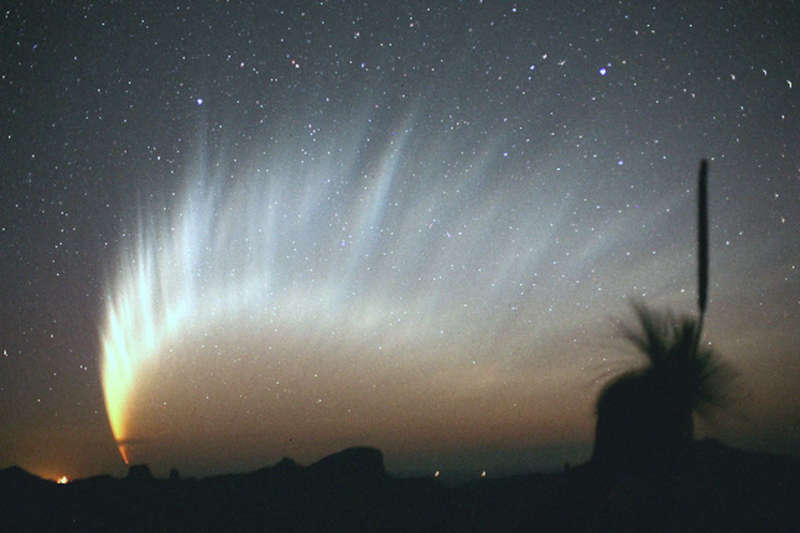Credit & Copyright: Robert H. McNaught
Explanation:
Comet McNaught, the Great Comet of 2007,
grew a spectacularly long and filamentary tail.
The magnificent
tail spread across the sky and was visible for several days to
Southern Hemisphere observers just after sunset.
The amazing ion tail showed its greatest extent on long-duration,
wide-angle camera exposures.
During some times,
just the tail itself
was visible just above the horizon for many northern observers as well.
Comet C/2006 P1 (McNaught),
estimated to have attained a peak brightness of
magnitude -5 (minus
five),
was caught by the
comet's discoverer
in the featured image just after sunset in January 2007 from
Siding Spring Observatory in
Australia.
Comet McNaught, the brightest
comet in decades, then
faded as it moved further into southern skies and away from the
Sun and
Earth.
Over the next month,
Comet TsuchinshanBATLAS, a candidate for the Great Comet
of 2024, should display its most
spectacular tails
visible from the
Earth.
1999 2000 2001 2002 2003 2004 2005 2006 2007 2008 2009 2010 2011 2012 2013 2014 2015 2016 2017 2018 2019 2020 2021 2022 2023 2024 2025 |
Yanvar' Fevral' Mart Aprel' Mai Iyun' Iyul' Avgust Sentyabr' Oktyabr' Noyabr' Dekabr' |
NASA Web Site Statements, Warnings, and Disclaimers
NASA Official: Jay Norris. Specific rights apply.
A service of: LHEA at NASA / GSFC
& Michigan Tech. U.
|
Publikacii s klyuchevymi slovami:
Comet McNaught - Kometa MakNota
Publikacii so slovami: Comet McNaught - Kometa MakNota | |
Sm. takzhe:
Vse publikacii na tu zhe temu >> | |
